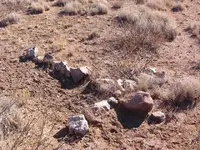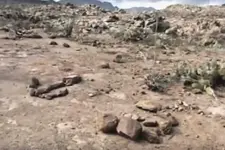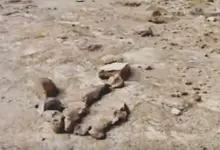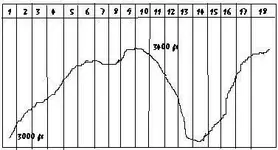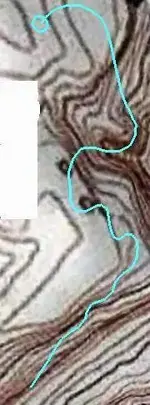Another "in plain sight" idea that I once found to be quite compelling, probably invented by someone with a sense of humor a bit like my own, was that of simply piling a number of gold or silver ingots up in an irregular manner and then encasing them all in a covering of "concrete". Once shaped and colored like most of the surrounding rock, the result would be indistinguishable, except for a particular mark, shape or feature. A wood frame or an arrangement of poles covered in animal hides and skillfully plastered over in the same fashion, could also suffice for caching bulkier objects. Depending on the thickness and hardness of the coating (weather resistance), something like that could last hundreds of years. Remember the "three boulders shaped like teepees" LDM clue ?
Insofar as the 18 places is concerned, I suspect and will be searching for something I believe would present a significant hazard to the unwary.....in addition to the "deadfall" I also believe is just inside the entrance.
Despite plotting and tracing on foot several potential routes within my own area, with an eye out for anything that could be recognized and followed point to point, there doesn't appear to be any common physical mark or marker which can be said to point the way, let alone anything equidistant as appears to be the case with the "trail" stones. That is one of the reasons why I had concluded that the "trail" or "path" shown with the dotted line, is actually underground....with the exception of the part from the first dot to the wavy line. That line is where the "path" transitions from "above" to "below" ( and the maps from Spanish to Latin ) IMO, and I also believe the first dot indicates where the first sample of what's in store can be examined and duly noted. If my assumptions are correct, I will find a sealed but fragile clay vessel containing a hazardous powdered substance.... arsenic, scopolamine ( the effects of which may be related to the "cave of gold bars" stories), or even the powdered substance recently described by Injunbro on the "Apache" thread. Such a "land mine", depending on the potency and shelf life of the substance or combination of ...especially 18 of them buried just under a soft surface along a narrow and low clearance passage...would be quite an effective deterrent to any unsuspecting THer I think.
All of this might sound crazy to some folks.....but




